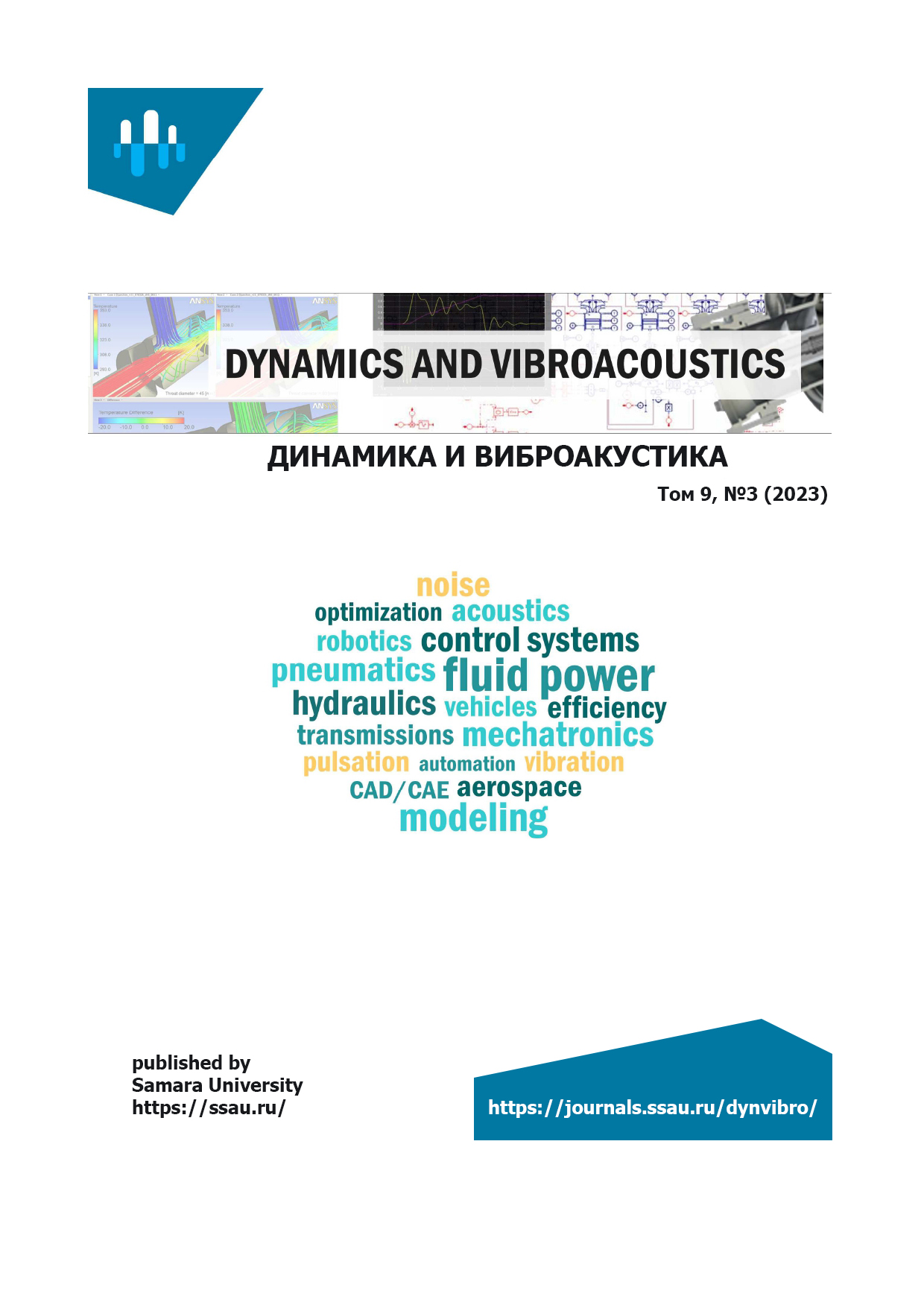INFLUENCE OF NOTCH DEPTH ON MULTI-CYCLE FATIGUE OF SPECIMENS UNDER OUTSTRIPPING SURFACE PLASTIC DEFORMATION
- Authors: Pavlov V.F.1, Vakulyuk V.S.1, Sazanov V.P.1, Semenova O.Y.1, Matveeva K.F.1
-
Affiliations:
- Samara National Research University (Samara University)
- Issue: Vol 9, No 3 (2023): 23.12.2023
- Pages: 16-22
- Section: Articles
- Published: 23.12.2023
- URL: https://dynvibro.ru/dynvibro/article/view/27018
- DOI: https://doi.org/10.18287/2409-4579-2023-9-3-16-22
- ID: 27018
Cite item
Full Text
Abstract
The influence of the notch depth of a semicircular profile on the multi-cycle fatigue of solid and hollow cylindrical samples made of steel 20 with diameter 25 mm under outstripping surface plastic deformation was studied. It was revealed that with an increase in the notch depth from 0.3 mm to 1.0 mm, the endurance limit of notched samples decreases with the same hardening treatment. To maintain the hardening effect during multi-cycle fatigue with increasing notch depth, it is necessary to increase the thickness of the hardened surface layer of the samples with outstripping surface plastic deformation. It has been established that to assess the influence of surface hardening on the endurance limit of samples with notches of various depths, one should use the criterion of average integral residual stresses calculated from the thickness of the surface layer of the dangerous cross-section of the sample, equal to the critical depth of a non-propagating fatigue crack.
About the authors
Valentin F. Pavlov
Samara National Research University (Samara University)
Author for correspondence.
Email: pavlov.vf@ssau.ru
doctor of technical sciences, head of strength of materials department of Samara National Research University (Samara University)
34, Moskovskoye shosse, Samara, 443086, Russian FederationVladimir S. Vakulyuk
Samara National Research University (Samara University)
Email: vak.v.s@yandex.ru
doctor of technical sciences, professor of strength of materials department of Samara National Research University (Samara University)
34, Moskovskoye shosse, Samara, 443086, Russian FederationVyacheslav P. Sazanov
Samara National Research University (Samara University)
Email: pavlov.vf@ssau.ru
associate professor of strength of materials department
34, Moskovskoye shosse, Samara, 443086, Russian FederationOl'ga Yu. Semenova
Samara National Research University (Samara University)
Email: ser-alv@yandex.ru
candidate of technical science, associate professor of further mathematics department of Samara National Research University (Samara University).
34, Moskovskoye shosse, Samara, 443086, Russian FederationKarina F. Matveeva
Samara National Research University (Samara University)
Email: dakotastr@mail.ru
postgraduate student of strength of materials department of Samara National Research University (Samara University)
34, Moskovskoye shosse, Samara, 443086, Russian FederationReferences
- Ivanov, S. I. (1971), "On determination of residual stresses in cylinder by rings-and-stripes method. Residual stresses", Transactions of Kuibyshev Aviation Institute, issue 53, pp. 32-42.
- Ivanov, S. I., Shatunov, M. P. and Pavlov, V. F. (1974) "The influence of residual stresses on the endurance of notched specimens", Problems of aircraft constructions elements strength, Kuibyshev Aviation Institute, issue 3, pp. 88-95. (in Russian).
- Radchenko, V. P. and Pavlov. V. F. (2011) "The maximum of compressive residual stresses under surface hardening of parts", Proceedings of the International Scientific Technical Conference "Strength of materials and structural elements", The G. S. Pisarenko Strength Problems Institute of the Ukraine Academy of Sciences, Kiev, , pp. 354-357. (in Russian).
- Filatov, E. Ya. and Pavlovskiy, V.E. (1985) Universal machine complex for fatigue tests of materials and structures, Scientific Thought, Kiev. (in Russian).
- Pavlov, V. F. (1988), "The influence of residual stresses in a part with a concentrator surface layer value and distribution on the endurance limit. Report 1. Solid parts", Universities News. Mechanical Engineering, no. 8, pp. 22-26. (in Russian).
- Pavlov, V. F. (1988), "The influence of residual stresses in a part with a concentrator surface layer value and distribution on the endurance limit. Report 2. Hollow parts.", Universities News. Mechanical Engineering, no. 12, pp. 37-40. (in Russian).
- Pavlov, V. F., Kirpichev, V. A. and Vakulyuk, V. S. (2012), Prognozirovanie soprotivleniya ustalosti poverkhnostno uprochnennykh detaley po ostatochnym napryazheniyam [The prediction of surface hardened parts fatigue resistance by residual stresses], Publishing House of the SSC RAS, Samara (in Russian)
- Ivanov, S. I. and Pavlov, V. F. (1976), "Residual stresses influence on fatigue strength", Strength problems, no. 5, pp. 25-27. (in Russian).
- Serensen, S. V., Borisov, S. P. and Borodin, N. A. (1969), "On surface hardened specimens fatigue resistance evaluation taking into account residual stress kinetics", Strength problems, no. 2, pp. 3-7. (in Russian).
- Kravchenko, B. A. and Mitryaev K. F. (1968), Obrabotka i vynoslivost' vysokoprochnykh materialov [Machining and endurance of high-strength materials], Kuibyshev Publishing House, Kuibyshev. (in Russian).
- Turovsky, M. L., Shifrin N. M. (1970) "Stress concentration in the surface layer of cemented steel". Mechanical Engineering Bulletin, no. 11, pp. 37-40. (in Russian)
- Pavlov, V.F. (1986), "On connection between residual stresses and endurance limit under bending in stresses concentration conditions", Universities News. Mechanical Engineering, no. 8, pp. 29-32. (in Russian).
Supplementary files







